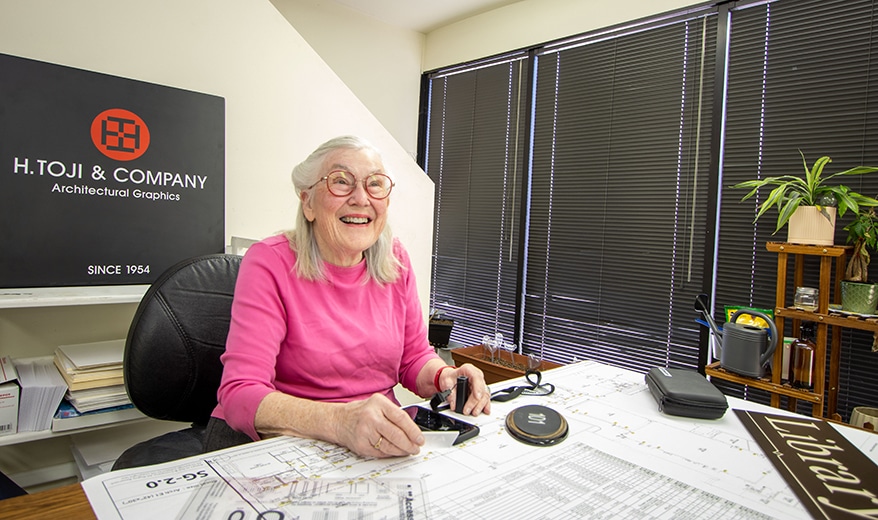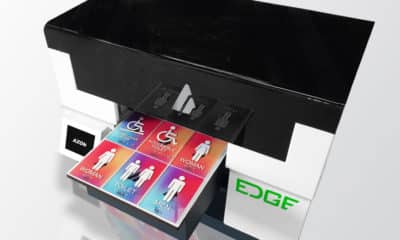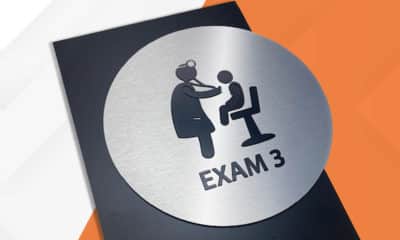Signs of the Times is happy to announce that Sharon Toji, H Toji and Co. (Lakewood, CA) — also known as ‘The ADA Sign Lady’ — will be available to answer questions from ISA Expo attendees in the Signs of the Times booth (1653) at 3 p.m. this Wednesday, April 12 and Thursday, April 13. Toji is one of the foremost experts in ADA signage, so if you have a question or just want to chat briefly about ADA sign concerns, please stop by.
Our most recent Brain Squad survey included the following question on ADA signage, which we sent along to Toji. That question and her answer are below, and provide evidence of the kind of knowledge, insight and detail that she is willing to share.
Q. Are there any instances where non-compliant ADA signs have been found by inspectors and consequences followed? I have never heard of any situation where this has happened and it is hard to get clients to adapt to ADA compliance if they have signage already that is not compliant due to the cost of replacing all the signage. — Andrew A., Kensington, MD
A. Actually, the most stunning example that I remember, because of the expense of the project, was quite a few years ago in California. It had to do with braille dot and cell spacing. Since it was California, the spacing of tenths of an inch between dots in a cell, and three tenths of an inch from dot to corresponding dot in adjacent cells, was required. A multistory state building was completed on a main street in Sacramento, the state capital, and unfortunately for the sign company, it was across the street from the State Architect’s office.
When the building was finished, one of the state architects strolled across the street to check it out, and he had a measurement tool for braille. You guessed it! The designer had used print braille spacing — not legal in California. About $100,000 of signs came down! I only hope they didn’t end up in the landfill. The sign company called me, saying they had no idea there were spacing standards for braille, but unfortunately, there it was, right in the accessibility chapter of the California Building Code!
There are enough signs now that get turned down, especially because blind people complain about incorrect braille, or [not] every sign having the same braille, that some cities in California now require a certificate from the sign company that all their signs have been checked, not just for correct braille, but also for correct tactile characters.
Advertisement
Sign companies should always remind their clients that the government provides tax incentives every year for businesses that make ADA improvements. Signs are a good fit, because they don’t usually involve any construction. Ask your tax expert! — Sharon Toji
In addition to being an ADA signage expert, Sharon Toji is also one of the five winners of the 2023 Women in Signs award. Click here to read her profile.
 Sharon Toji is the co-owner of H Toji and Co. in Lakewood, CA.
Sharon Toji is the co-owner of H Toji and Co. in Lakewood, CA.

 Tip Sheet2 weeks ago
Tip Sheet2 weeks ago
 Photo Gallery3 days ago
Photo Gallery3 days ago
 Ask Signs of the Times5 days ago
Ask Signs of the Times5 days ago
 Real Deal2 weeks ago
Real Deal2 weeks ago
 Benchmarks1 week ago
Benchmarks1 week ago
 Paula Fargo16 hours ago
Paula Fargo16 hours ago
 Photo Gallery16 hours ago
Photo Gallery16 hours ago
 Women in Signs2 weeks ago
Women in Signs2 weeks ago












